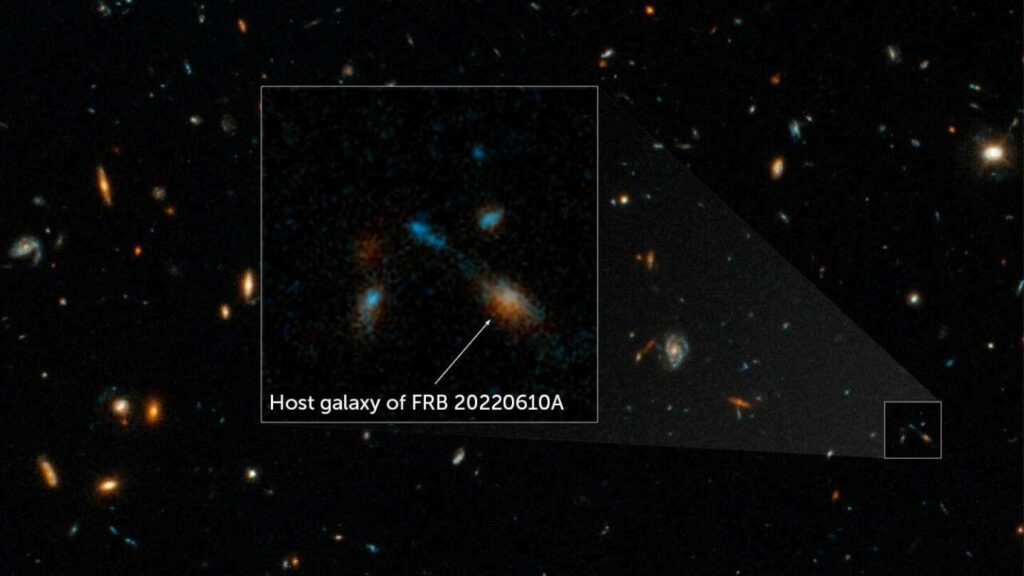The Most Potent Fast Radio Burst Ever Detected Linked to a Collision of Seven Galaxies
The cosmic collision is situated at a distance of 11 billion light-years from our planet.

NASA, ESA, STSCI, ALEXA GORDON/NORTHWESTERN
A remarkable surge of electromagnetic energy has been successfully traced back to a cluster of seven merging galaxies, marking a significant discovery. This finding provides further support for the theory that these enigmatic bursts of energy, known as fast radio bursts (FRBs), originate from magnetars, which are peculiar and highly magnetized dead stars.
FRBs are brief yet explosive events that release an immense amount of energy, equivalent to that of the sun over the course of a month. The cause of these peculiar phenomena, first observed in 2007, remains uncertain.
During a news conference at the American Astronomical Society’s annual meeting, Alexa Gordon, an astronomer from Northwestern University, expressed the belief that FRBs are likely caused by compact objects such as magnetars. While a magnetar in our own galaxy has been observed producing an FRB, it has not been proven that all bursts can be attributed to magnetars.
To investigate further, Gordon and her colleagues utilized NASA’s Hubble Space Telescope to closely examine the origin of FRB 20220610A, the most potent and distant FRB discovered thus far. To their surprise, they discovered a group of seven galaxies situated 11 billion light-years away from Earth, all confined within an area comparable in size to our own Milky Way galaxy.
“We had anticipated the presence of a single, massive spiral galaxy,” remarked Wen-fai Fong, an astronomer from Northwestern University. “The image we encountered was quite unexpected and striking.”
FRBs have been detected in various settings, ranging from individual galaxies to globular clusters (SN: 1/4/17; SN: 2/23/22). However, during a recent news conference and in a paper published on arXiv.org in November, the team revealed that this is the first time an FRB has been observed emanating from a collision of seven galaxies.
These tumultuous environments can facilitate the exchange of gas, dust, and other materials between galaxies, which in turn can trigger the formation of new stars. If a massive star were to form under such circumstances, its demise could result in the creation of a magnetar, potentially offering an explanation for the FRB phenomenon. The team intends to utilize the James Webb Space Telescope to thoroughly investigate the seven-galaxy system and search for any indications of a magnetar.
Do not forget to share your opinion with us to provide you with the best posts !




0 Comments